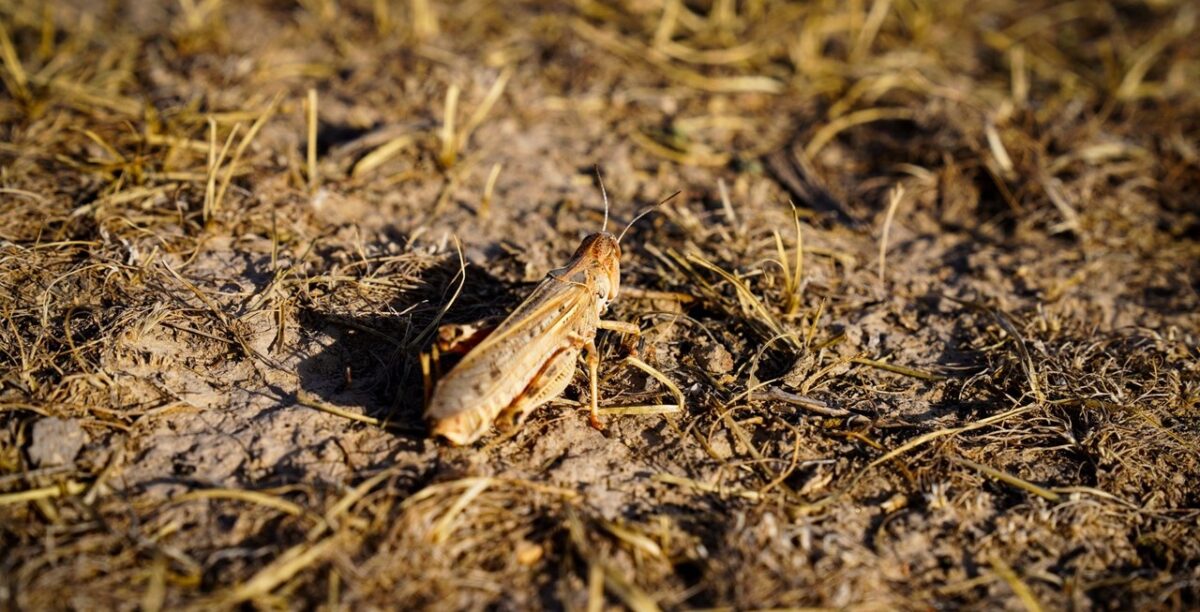The United Nations Food and Agriculture Organization on Wednesday warned of a large-scale outbreak of Moroccan Locust across 10 provinces in north and northeast Afghanistan – the country’s “wheat basket”.
According to the FAO, sightings of locust at different development stages have been made in Badakhshan, Badghis, Baghlan, Balkh, Kunduz, Samangan, Sar-e-Pul and Takhar provinces and from Herat and Ghor.
“The reports of Moroccan Locust outbreak in Afghanistan’s wheat basket is a huge concern. The Moroccan locust eats more than 150 species of plants, including tree crops, pastures and 50 food crops, all of which grow in Afghanistan. It represents an enormous threat to farmers, communities and the entire country,” said Richard Trenchard, the FAO Representative in Afghanistan.
“The last two big outbreaks, 20 and 40 years ago, cost Afghanistan an estimated eight and 25 percent of its total annual wheat production. Harvest forecasts this year are the best we have seen for the last three years – but this outbreak threatens to destroy all these recent gains and dramatically worsen the food insecurity situation later this year and into next year,” Trenchard added.
The FAO said the Moroccan Locust is ranked among the most economically damaging plant pests in the world and that a full outbreak this year could result in crop losses ranging from 700,000 to 1.2 million metric tonnes of wheat – up to a quarter of the total annual harvest.
This translates to between $280 million and $480 million in economic loss – as of today’s prices in the country, the statement noted.
North and northeast regions of Afghanistan are prone to Moroccan Locust outbreaks and this year has seen “perfect” conditions for a locust outbreak: drought, over-grazing, very limited locust control and just the right amount of rainfall in March and April for locusts. These conditions created the ideal environment for locusts to hatch and swarm, the FAO said.
In these parts of Afghanistan, Moroccan Locust lay eggs between May and June, depending on environmental conditions, in hilly and rangeland areas. The young locusts hatch from the egg-pods the following year in late March and start feeding on surrounding grasses. This year the hatching started earlier than usual.
“The alarm bells rang late, but FAO, its incredible NGO partners, local communities and local authorities sprang into immediate action,” said Trenchard. “Chemical supplies were low across the country so we were forced to focus on traditional ‘mechanical control’ methods to reduce the impact of the outbreak.”
Trenchard said thousands of people in communities across the affected provinces have been working day and night to kill the hopper bands before they become adults and begin to swarm. “We’ve used our cash-for-work methodology to put money into the pockets of farmers most at risk while accelerating mechanical control in communities across the north and northeast regions. We have also seen a strong, rapid and encouraging response from the (Taliban’s) Ministry of Agriculture, Irrigation and Livestock, although their capacity to respond is heavily constrained by a lack of resources,” he added.
Typically, in such outbreaks, after decimating pasture, large locust hopper bands and adult swarms move down to cropland areas and eat rain-fed and irrigated wheat and other crops. There is not a single crop which is spared from Moroccan Locust damage.
If the Moroccan locust population is left untreated, it could increase its numbers by 100-fold in the next year, creating even bigger problems for agriculture and food security for Afghanistan and that of its neighbors.
“Chemical control methods are far more effective than mechanical control. Afghanistan used to have a very strong locust control system in place. But this has been heavily eroded in the last two years. At this point in time, all we can hope is that the mechanical control approaches will reduce the overall impact of the swarms. But we must start now to prevent 2024 from seeing even bigger outbreaks; a very real threat going forward,” Trenchard said.
Trenchard said that in response to the threat, funding is urgently needed to support both mechanical and chemical control measures alongside on-the ground surveys to monitor and map locust hatching sites.





